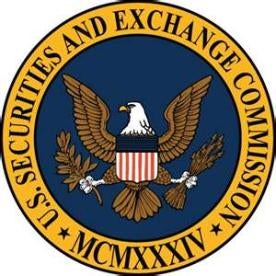On March 28, 2016, the staff of the SEC’s Division of Investment Management issued a no-action letter to SPDR S&P Dividend ETF (the “Fund”) permitting the Fund to acquire more than (i) 10% of the total outstanding voting stock of an insurance company notwithstanding Section 12(d)(2) of the 1940 Act and (ii) 5% of an outstanding class of equity securities of an issuer that, in its most recent fiscal year, derived more than 15% of its gross revenues from securities related activities (an “Equity Issuer”) notwithstanding Rule 12d3-1(b)(1).
The Fund
The investment objective of the Fund is to seek to provide investment results that, before fees and expenses, correspond generally to the total return performance of the S&P High Yield Dividend Aristocrats Index (the “Index”), an index that tracks performance of publicly traded issuers that have historically followed a policy of making dividend payments, including insurance companies and financial services firms that derive a substantial portion of their revenues from securities-related activities. The index provider, which is not affiliated with the fund or its investment adviser (the “Adviser”), determines the composition of the Index, relative weightings of securities in the Index and publishes information regarding the market value of the Index. In managing the Fund, the Adviser may invest the Fund’s assets in a subset of securities in the Index or may invest the Fund’s assets in substantially all of the securities represented in the Index in approximately the same proportions as the Index.
Section 12(d)(2)
Section 12(d)(2) of the 1940 Act generally prohibits a fund from purchasing any security issued by an insurance company if, as a result of the purchase, the fund would own more than 10% of the total outstanding voting stock of the insurance company. The SEC historically has interpreted Section 12(d)(2) as “prohibiting control of an insurance company by an investment company but permitted acquisition of stock of an insurance company upon assurance that there would be no such control.” Consequently, the staff stated that it would not be inconsistent with the intent of Section 12(d)(2) if the Fund exceeded the Section’s investment limitations by purchasing or acquiring the outstanding voting stock of an insurance company in the approximate proportion that the insurance company’s stock represents in the Index, based on the Fund’s facts and representations. Such facts and representations include that the Fund has a non-fundamental investment policy to “not invest in the securities of a company for the purpose of exercising management or control, provided that the Trust may vote the investment securities owned by the Fund in accordance with its views.” Notwithstanding the foregoing non-fundamental investment policy, the Fund represented that it will not exercise a controlling influence over the management or policies of the insurance company and will either: (a) vote its shares in the insurance company as directed by an independent third party, or (b) vote its shares in the insurance company in the same proportion as the vote of all other holders of the insurance company’s shares.
Section 12(d)(3) and Rule 12d3-1
Section 12(d)(3) of the 1940 Act generally prohibits a fund from purchasing any security issued by a broker, dealer, underwriter or registered investment adviser. Rule 12d3-1, however, exempts certain acquisitions from the prohibitions of Section 12(d)(3) but limits to 5% the amount that a fund may acquire of the outstanding securities of a particular class of equity securities of an issuer that engages in securities-related activities. The Fund noted for the SEC staff that as it increases in size it may be unable to comply with this 5% limitation, and consequently, may not be able to invest directly in Equity Issuers to the extent necessary for it to accurately track the Index. In releases proposing amendments to Rule 12d3-1, the SEC identified two apparent Congressional purposes for prohibiting fund investments in securities-related issuers: (i) “to limit, at least to some extent, the exposure of [funds] to entrepreneurial risks peculiar to securities related businesses,” and (ii) “to prevent potential conflicts of interest and reciprocal practices,” such as directed brokerage. With respect to the former, the SEC staff agreed that the concern regarding entrepreneurial risks of securities-related issuers is adequately addressed by prohibiting the acquisition of general partnership interests in such issuers, adding that since virtually all securities firms are currently organized as corporations and not general partnerships, Congress’s purpose in limiting the exposure of entrepreneurial risks to investment companies is theoretical. To address concerns about conflicts of interest and reciprocal practices, the Fund represented that if it invests in an Equity Issuer it will not (i) use that Equity Issuer as the executing broker for any Fund transactions, and (ii) acquire the securities issued by that Equity Issuer in an amount exceeding the approximate proportion that the issuer represents in the Index. In addition, if the Fund owns more than 5% of the value of the outstanding securities issued by persons that engage in securities related activities (with the exception of Equity Issuers), the Fund will comply with the provisions of section 17(e) of the 1940 Act and Rule 17e-1 thereunder when using that issuer, or any affiliated person of that issuer as a broker for the purchase or sale of any security in the Fund’s portfolio. Similarly, if the Fund uses any affiliated person of an Equity Issuer as the executing broker for any Fund transactions, the Fund will also comply with the provisions of section 17(e) of the 1940 Act and rule 17e-1 thereunder. The Fund contended, and the SEC staff agreed, that compliance with those provisions in such circumstances would provide adequate safeguards against the reciprocal practices and conflicts of interest that Section 12(d)(3) was intended to address.
A copy of the no-action letter is available at: https://www.sec.gov/divisions/investment/noaction/2016/spdr-spdividend-etf-032816-12d2.htm.


 i
i


